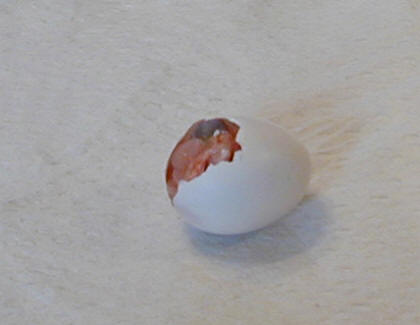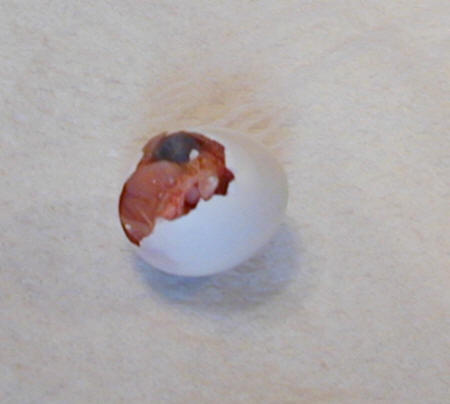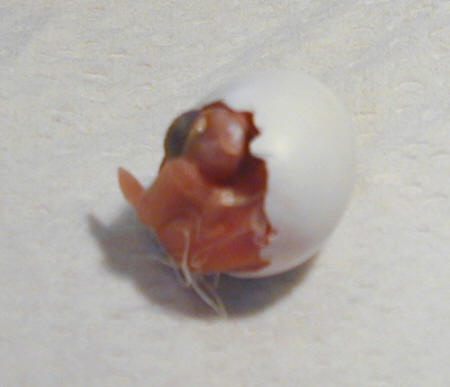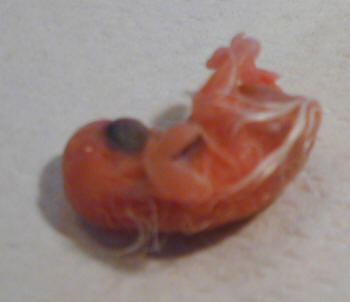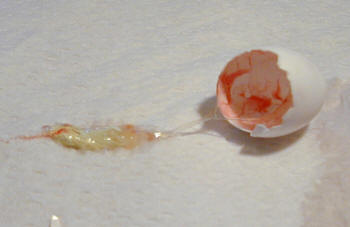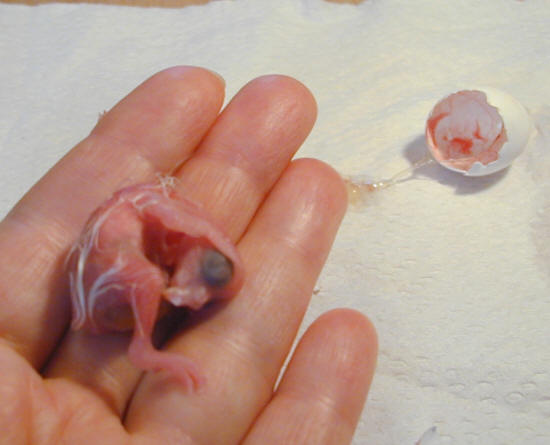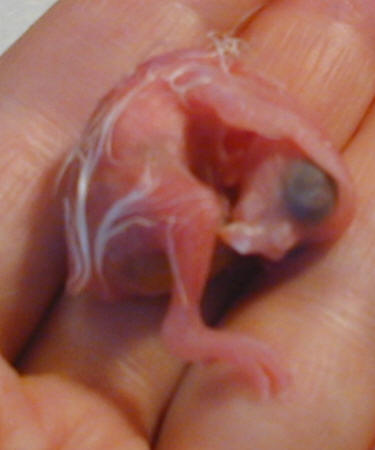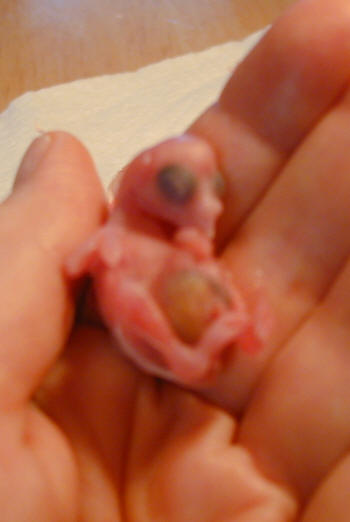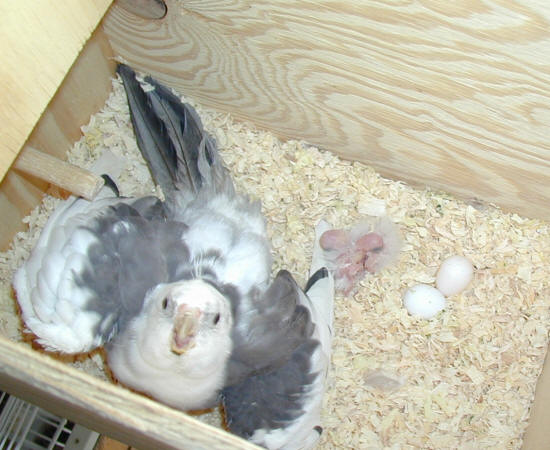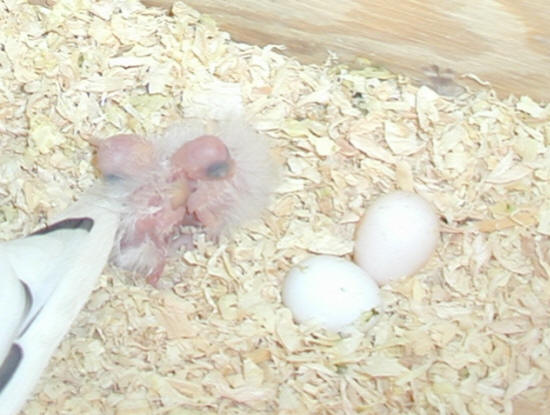|
|
|||||||||||||||||||||||||||||||
|
This is the little one after I opened the shell a bit. He had been pipping for at least two days and my gut said things needed to be done. There is also a slight color change to the shell. I opened only the top of the shell near where the pip marks remained in one spot. This was towards where the air sac would be in the shell at the rounder portion. I kept moistening with a damp wash cloth trying to moisten the membrane that was kind of stuck to the baby.
I peeled away a bit more trying to determine whether the yolk sac had been absorbed. As I peeled away, I saw no bleeding which is a good sign. It means all the blood has been absorbed. If there was blood I would have used a little flour to try to stop the bleeding and would have stopped for a little while while staying with the chick and keeping it warm with a heat source.
Moistened and opened a bit more. He was trying to come out. Checked and still saw no sign of the yolk sac. His right wing is in the proper position for pipping and another sign the yolk sac may have been absorbed. When the wing is not in this position and the membrane is stuck to the baby - it may involve trying to help the baby absorb the yolk sac. As you do it - you need to get that right wing over it's head in that exact position and have either the egg shell or your fingers pressing against the baby's feet to help it stay in the proper position to pip in yolk sac. Often you need an extra set of hands. Most often I do not have another set available when this needs to be done.
The baby had in fact absorbed the yolk sac. It was also more than ready to hatch and even pooped in the shell. If not helped out it may have died. I have lost a couple from these particular parents at this stage not realizing they needed an assist about two years ago.
Often babies who need this type of assist and clearly should have hatched earlier will seem stiff and almost frozen in this position.
As you can see from this rather blurry photo - the yellow is the absorbed yolk sac.
It was immediately returned to the parents with the remaining part of the shell. Parents are more readily able to accept the chick with the shell. This is why I save the shells from any other babies hatching around the same time or try to be sure the shell from the baby getting the assist is as intact as I can. The parents were fine. Hours later with it's older sib, the baby has food in it's crop, it's all fluffy and snuggling with the sib. This is his dad, Sonny letting me know he is protecting his young.
If you look closely - you can see the yellow color in the baby's crop. That is the food the parents have fed it. The baby in the front is the new hatchling. There are two more eggs, the one towards the front is fertile. The one toward the back is not. Just a slight color variation.
This assist happened pretty quickly. The humidity had been high and suddenly dropped. A hygrometer to measure the humidity near the nest boxes is very helpful to keep an eye on how things are going. A sudden drop near hatching with an egg pipping for a couple of days, and the pip mark not moving - just in one spot was what keyed me in to assist this one. Plus the sudden slight color change which may or may not be noticeable to newer breeders. With each assist there is always the risk of starting to early and the chick not being ready to hatch. Or not starting soon enough where it will either be too weak to survive or may not be alive when you start. May 20, 2004 Parents - Maude and Sonny Second chick - third egg laid. Second egg was infertile. First egg hatched May 16, 2004 Photos by Ellen in Maine while also assist hatching. Page
created May 20, 2004
Please Help Animals Needing Rescue & Shelter in
Disasters
AFA Disaster Relief Fund - Hurricane Katrina
http://loveofbirds.com/photoinfo/MSAssisthatch1.htm
|

